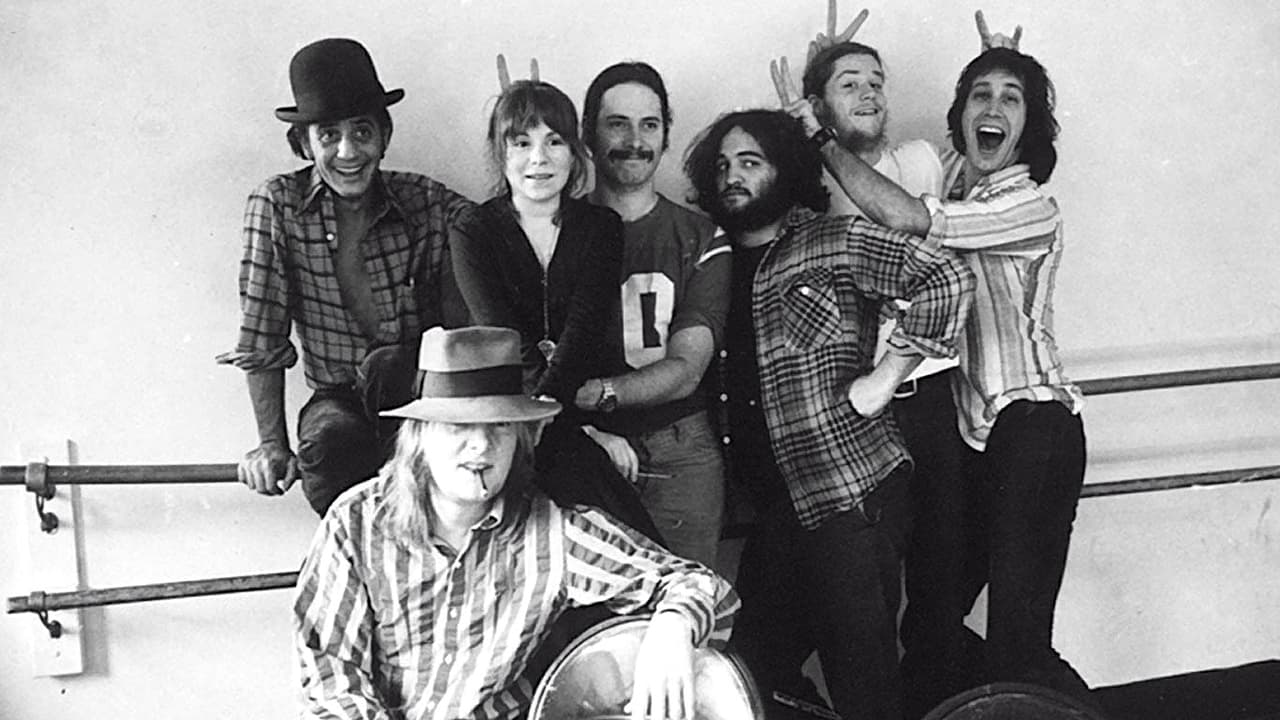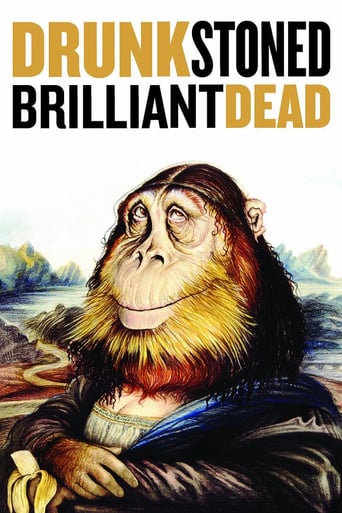

I cannot think of one single thing that I would change about this film. The acting is incomparable, the directing deft, and the writing poignantly brilliant.
... View MoreAt first rather annoying in its heavy emphasis on reenactments, this movie ultimately proves fascinating, simply because the complicated, highly dramatic tale it tells still almost defies belief.
... View MoreOne of the best movies of the year! Incredible from the beginning to the end.
... View MoreThere are moments that feel comical, some horrific, and some downright inspiring but the tonal shifts hardly matter as the end results come to a film that's perfect for this time.
... View MoreThis well presented documentary, directed by Douglas Tirola, gives us a good inside look at the highly satirical magazine National Lampoon. Founded in 1969 by 3 Harvard graduates, Doug Kenney, Henry Beard, and Rob Hoffman, the magazine published from 1970 to 1998.In its heyday in the 1970's, National Lampoon presented dark and scathing social and political satire, where seemingly nothing was off limits. That would include its now infamous 1973 cover where a revolver is being placed against the head of a dog with the caption "if you don't buy this magazine we'll kill this dog". The magazine would spin off into various other media avenues including radio, live theater, comedy albums, and finally movies, where its initial film presentation was the classic comedic gem "Animal House". An enormous list of talented comedians and writers would contribute to the success of National Lampoon over the years. However, this success would eventually lead to much of the talent moving on to other venues, such as SNL, leading to the eventual downfall of the publication.Overall, the viewer should be prepared to see tons of female breasts in this movie, as well as all kinds of explicit sexual references and stories. Also, they'll be many references to the darkest kind of humor, on topics that would be considered strictly taboo by many. I thought the documentary gave me a solid inside look at an important part of American satirical humor history.
... View MoreIt's notable that none of the truly successful / funny people who got their start via Lampoon- related ventures (Bill Murray, Harold Ramis, etc.) are in this movie, vouching for the quality of the Lampoon. Why is this? Because they owe their start to Second City, not to the Lampoon. Just as the Lampoon blames Lorne Michaels for taking "their" talent wholesale, they took this talent from Second City - people like John Belushi, Gilda Radner etc. ever wrote for or even had anything to do with the Lampoon. Animal House had a few laughs and, as noted in the movie, created a genre, but a realistic viewer will suspect the laughs are the result of (non-Lampoon) Harold Ramis. Caddyshack was crap. P. J. O'Rourke is (still) a pompous, unfunny drunk / conservative. Chevy Chase is here, promoting the Lampoon because the Lampoon is affiliated with his glory years 3 decades ago. The National Lampoon may have been considered shocking, new, or different, but it simply wasn't as funny as this movie makes it out to be. A truly timeless work will stand on its own. What is the legacy of the Lampoon? Quite a few people spell it out in this movie: "tits". Pictures of breasts and juvenile cartoons. Breasts are great, but (generally) not funny. If the Lampoon had classic, funny articles, people would still be referencing them (people still reference the Marx Brothers or Shakespeare). But they don't - why do you think that is?
... View MoreFor many of us our first introduction to off kilter and subversive humor came in the form of a magazine that was on newsstands everywhere. For pre-teens it was less the humor that was involved that got our attention but the fact there was nudity in it and it wasn't hidden under the counter. But for those who loved a good laugh it was the premier source of humor to find at the time, our own generations humor as opposed to that of what was popular at the time. There is a huge difference between Henny Youngman cracking wise about his wife and a magazine cover that pictured a dog with a gun to its head that read "Buy this magazine or we'll shoot this dog".This movie takes a look at NATIONAL LAMPOON from its inception to its demise, covering all bases good and bad. A spin off of the HARVARD LAMPOON, the magazine was started by Doug Kenney, Henry Beard and Robert Hoffman. It was a humor filled magazine that parodied and focused on what was happening in the country, sort of like MAD magazine but from a more adult perspective. What the three of them did was bring in many of the most thought provoking comedy writers of the time to work for the magazine and in return its success skyrocketed.You have to remember that these were the days before comedy clubs dotted the country and skit based comedy took over the airwaves. As a matter of fact it was from National Lampoon that many of those who went on to take over the airwaves began. As the magazine grew in popularity things happened that altered what was to come. Kenney left for a time leaving the magazine in the hands of Beard alone. A workaholic who helped create the tone of every issue, his disappearance had an effect on all involved.But what helped move the downfall of the magazine as well was the departure of many of the staff members. As the magazine grew it evolved into a number of albums, weekly radio shows and stage productions involving those writers. NATIONAL LAMPOON'S LEMMINGS was a record and stage show featuring both John Belushi and Chevy Chase. As those writers and performers left for shows like Saturday NIGHT LIVE, the magazine suffered. Many other noted writers stepped in and did well but they too left.The magazine got involved in movies in 1978 with the release of NATIONAL LAMPOON'S ANIMAL HOUSE but by then the magazine sales were dwindling. More successful movies followed but the magazine had lost its punch, relegating itself to special issues, rehashes of old issues and more nudity rather than humor. Eventually it ended publication.This documentary takes a look at all of that. Using a stills, filmed footage and numerous interviews with those involved it blends them together to take us through the magazine as it was and as it ended. It talks about the good and the bad, never whitewashing facts to suit those who loved it non-stop. In so doing it also reflects the evolution of comedy from that time period. Nearly every major comedy writer or humorist at the time had some connection to the magazine be it SNL writer Michael O'Donoghue, political satirist P.J. O'Rourke or screenwriter John Hughes.In some ways it was the success of the magazine that led to its demise years later. Coupled with a generation that relies solely on visual media and ignores printed matter there was little hope that the magazine could go on. Watching this movie makes that a sad realization that so much was lost when the magazine folded. But with this film many who weren't aware of the contribution to comedy that came from the magazine will be realized. Perhaps enough so that people will go back in search of old issues, maybe one fan will be inspired to create his own LAMPOON someday. We can hope.Until then we can watch and learn from some of the most creative comic minds of the past century on screen here. It serves as a reminder that creativity and humor can walk hand in hand and inspire one another. And it lets others know that there was something funny long before they were born, something this generation seems to not realize yet. With this movie the proof is there. An interesting and delightful documentary that captures the time and the laughs in only 98 far too short minutes.
... View MoreGrowing up I remember "National Lampoon Magazine" I would from time to time look at a copy at the drugstore counter or see a copy that a friend would bring to school, as my parents would not let me buy them they felt the content was to dirty! Yet I thought it was special the way that it blended funny stuff with society all blending in world events, famous people, politics, and movies and television as it even took a spin on race, sex, gender and many social topics.Yet from watching this documentary I learned a lot about National Lampoon's and that was it got it's start from educated college guys and in fact it use to be a "Harvard" university magazine! Along the way after it branched out to a magazine it expanded to the radio airwaves, then even began Lampoon plays and stand up routines. Many of the stories written in the magazine would later become hit movies most notable was 1983's "Vacation" and the Lampoon industry would launch the creation of "NBC's" "Saturday Night Live".And this documentary provided many good interviews from stars who got their start from the Lampoon franchise like Chevy Chase and Kevin Bacon and even John Goodman. And this picture told of the company history showing great highlights and drawings and covers of the magazine and news clips and commentary on how National Lampoon really did cause a stir with American society. Really this was a well done and good documentary to watch.
... View More